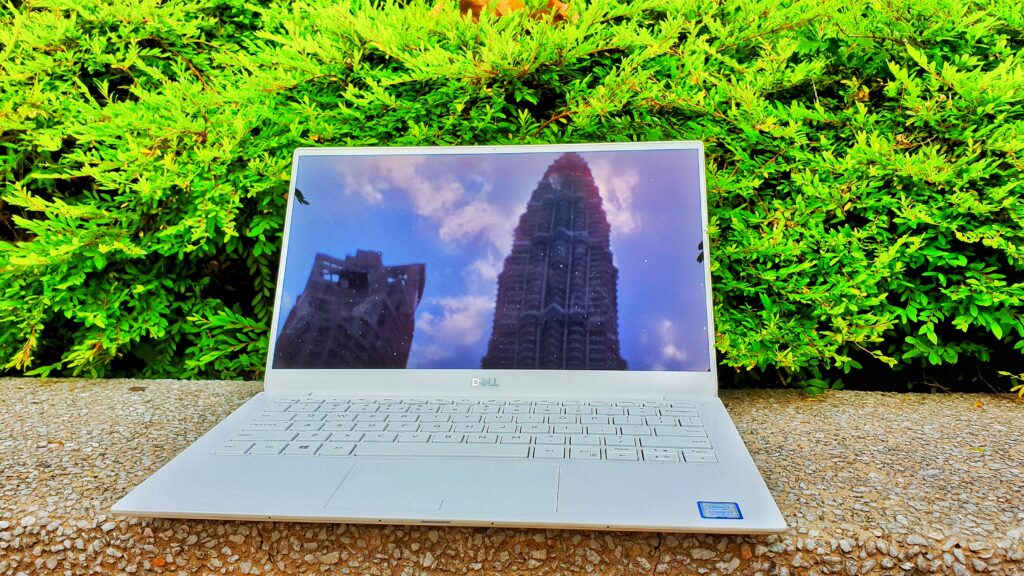
Dell XPS 13 9380 Review – Refined Perfection
The creation of the ideal ultrabook has always been a Sisyphean task for notebook manufacturers. Year after year, we see their greatest offerings fall short of greatness in one fashion or another be it due to design issues or significant compromises on the hardware owing to the challenge of cramming in something so powerful into something so slim.

The unit of Dell’s vaunted XPS 13 that we received dubbed the XPS 13 9380 is by far the closest, if not the ultimate personification of the ideal ultraportable as it is not only powerful, but slim and a sight to behold in equal measure.
Prior to this we took it for an extensive firsthand look and unboxing. Dell’s revision of their well regarded XPS 13 isn’t a radical change in terms of design or functionality, rather, it consists of a well considered series of enhancements that elevate it over its predecessor, already widely regarded as one of the best Windows ultraportables ever made.
In terms of size and form factor, this iteration of the XPS 13 is akin to its predecessor the 9370, retaining a similar weight and slimness as well as many of the features that make the XPS series a coveted workhorse amongst road warriors in the know.
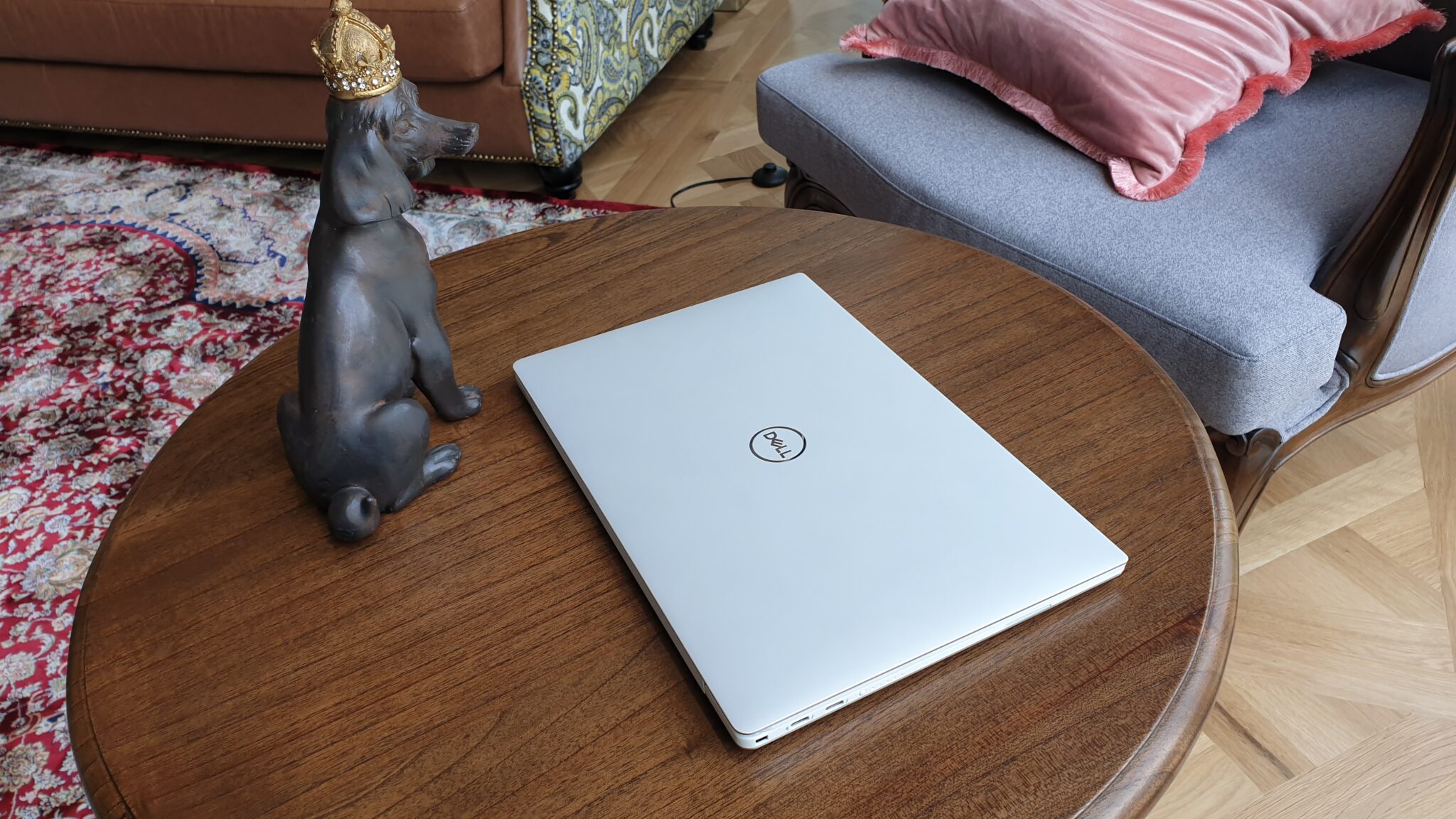
It retains the side mounted battery indicator – a series of white lights on the side like a power bank – that lets you see how much juice it has left at a glance without having to turn it on.
It also retains the coveted lead of being one of the smallest laptops to pack not one but two Thunderbolt 3 ports which allow you to port the feed out to up to two 4K displays if you deign to do so.
Other road warrior essentials like a backlit keyboard and, above all, excellent battery life stretching into a good 8 to 10 hours on average for the UHD version and almost double that for the FHD variants cement its status as a top choice for road warriors. But, there’s more under the hood than meets the eye.
So, what’s changed in the XPS 13 9380?
Table of Contents
The one major gripe with the XPS 13 9370 was the first thing they fixed – the placement of the webcam. Originally located on the base of the display in the 9370, the revamped XPS 13 moves it to the top by reengineering their new 720P webcam to be smaller than ever before so as to fit into the already narrow bezels.
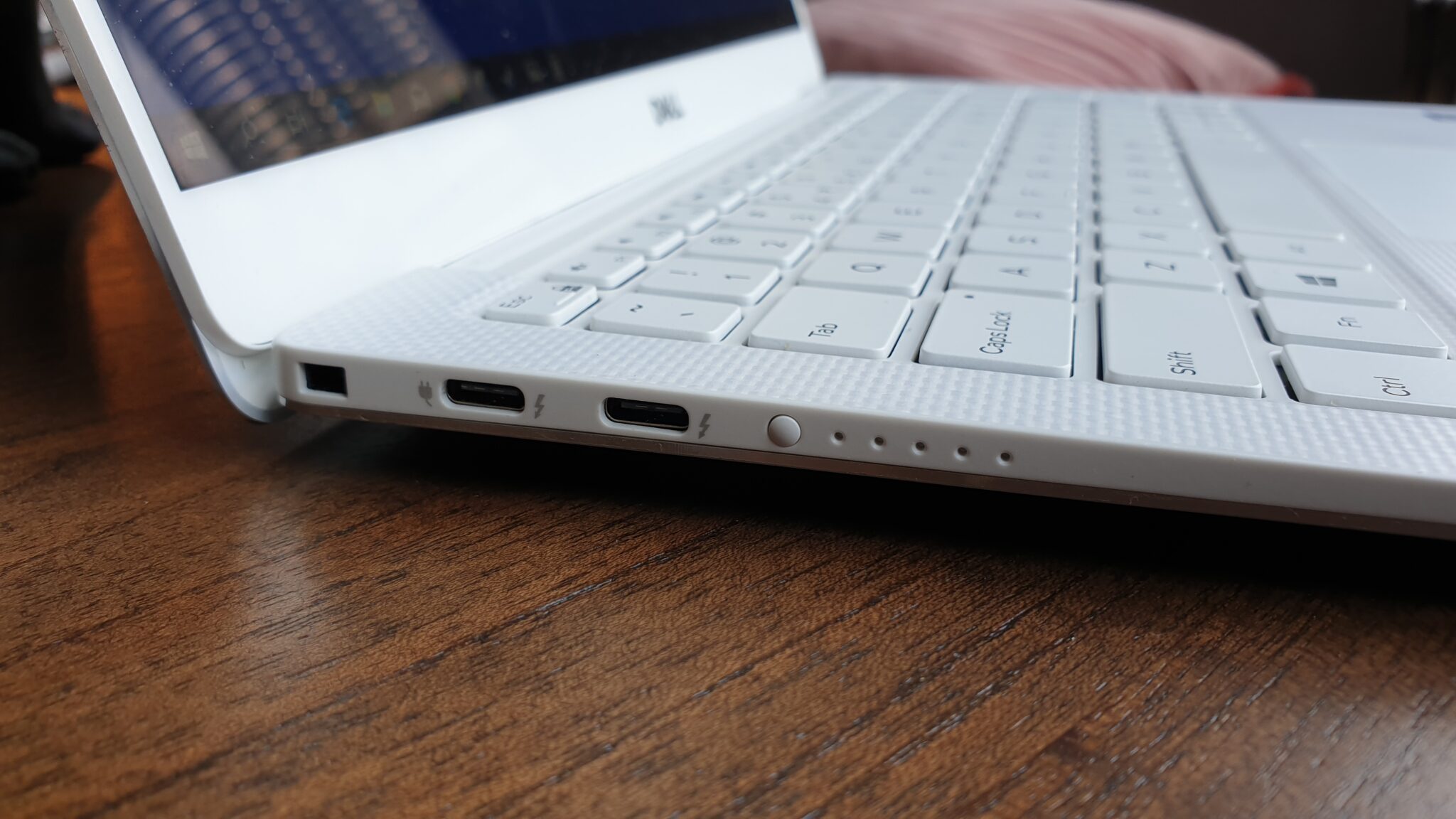
The XPS 13 has a battery indicator on the side that lets you check how much juice it has at a glance without having to turn it out.
This time around, they’ve also introduced a new shade of Frost for the external chassis that is even paler than the usual silvery brushed aluminium finish common to notebooks combined with Arctic White woven glass fiber palm rests. This colour combination was the colour scheme of our test unit. Optionally, the XPS 13 can also be acquired with a Rose Gold external finish or a darker Platinum Silver with black carbon fiber palm rests.
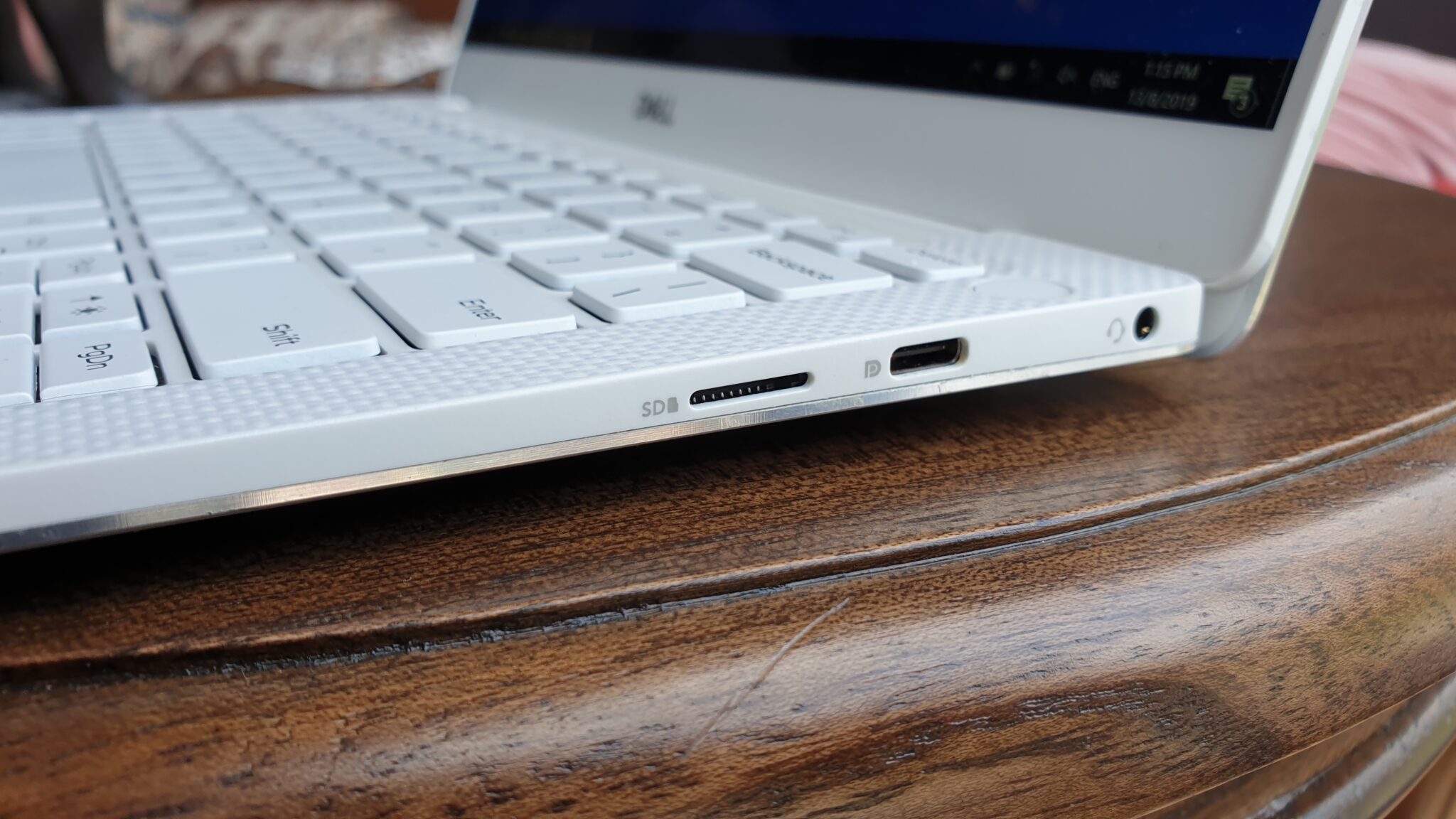
The notebook also has a hardware upgrade, this time around to the 8th generation Whiskey Lake Intel Core processors that offer slightly better performance over its immediate Kaby Lake predecessors in the 9370.
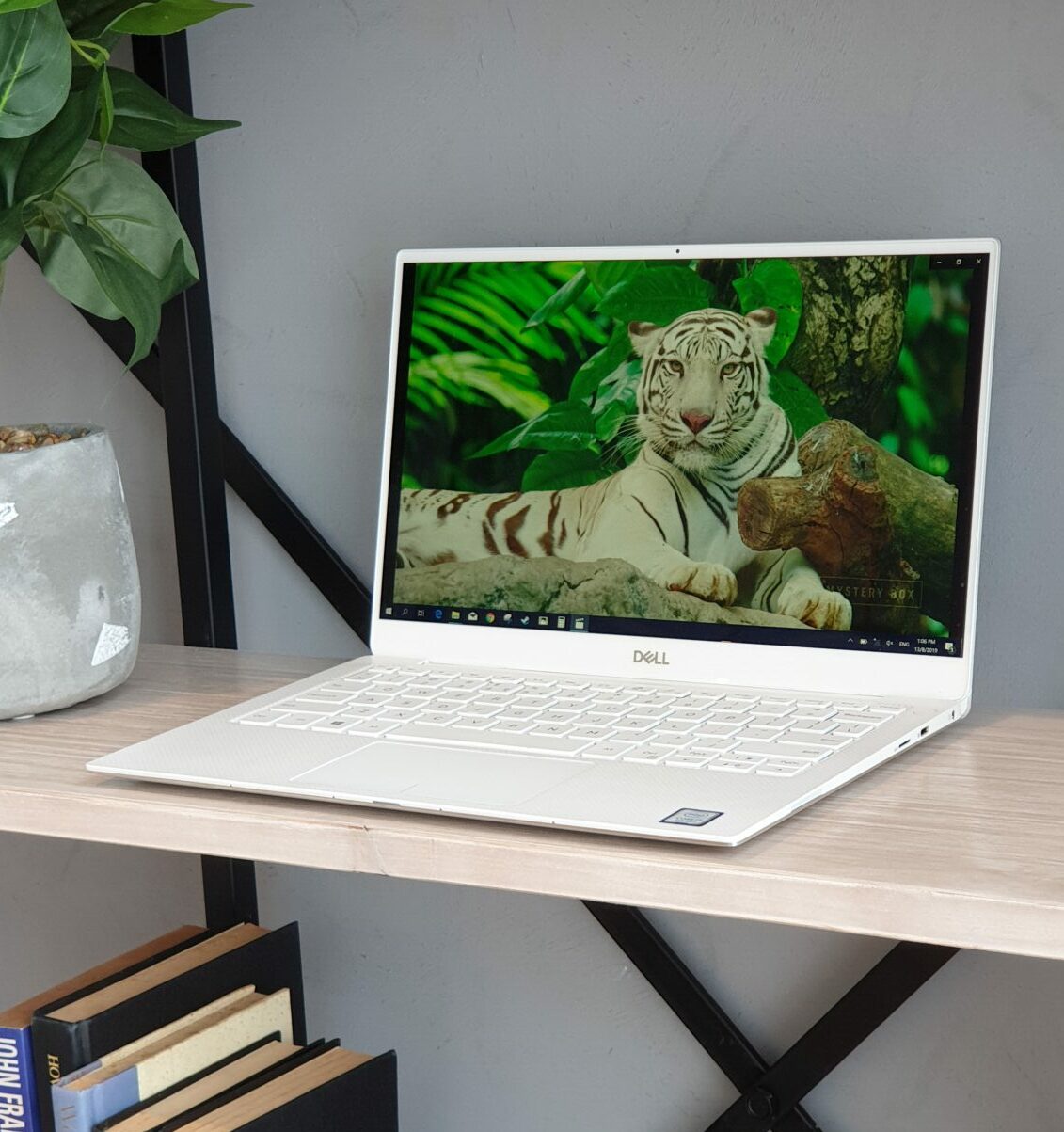
That aside, the XPS 13 retains a similar 52Whr internal battery and can be charged via any of its three USB Type-C ports and its 45W Type-C charger, making it logistically easier to charge in the field. Other than that, the XPS 13 also ships with a Type-C to Type-A dongle to read flash drives and other kit.
The XPS Experience
Our test unit is the top of the line variant with everything dialled to the maximum. Taking centre stage on Del’’s most powerful XPS 13 variant 9380 is a 13.3-inch 4K UHD InfinityEdge touchscreen that has an 80.7% screen-to-body ratio, a rated 1,500:1 contrast ratio and a brightness of 400-nits as well as the ability to cover 100% of the sRGB colour gamut.
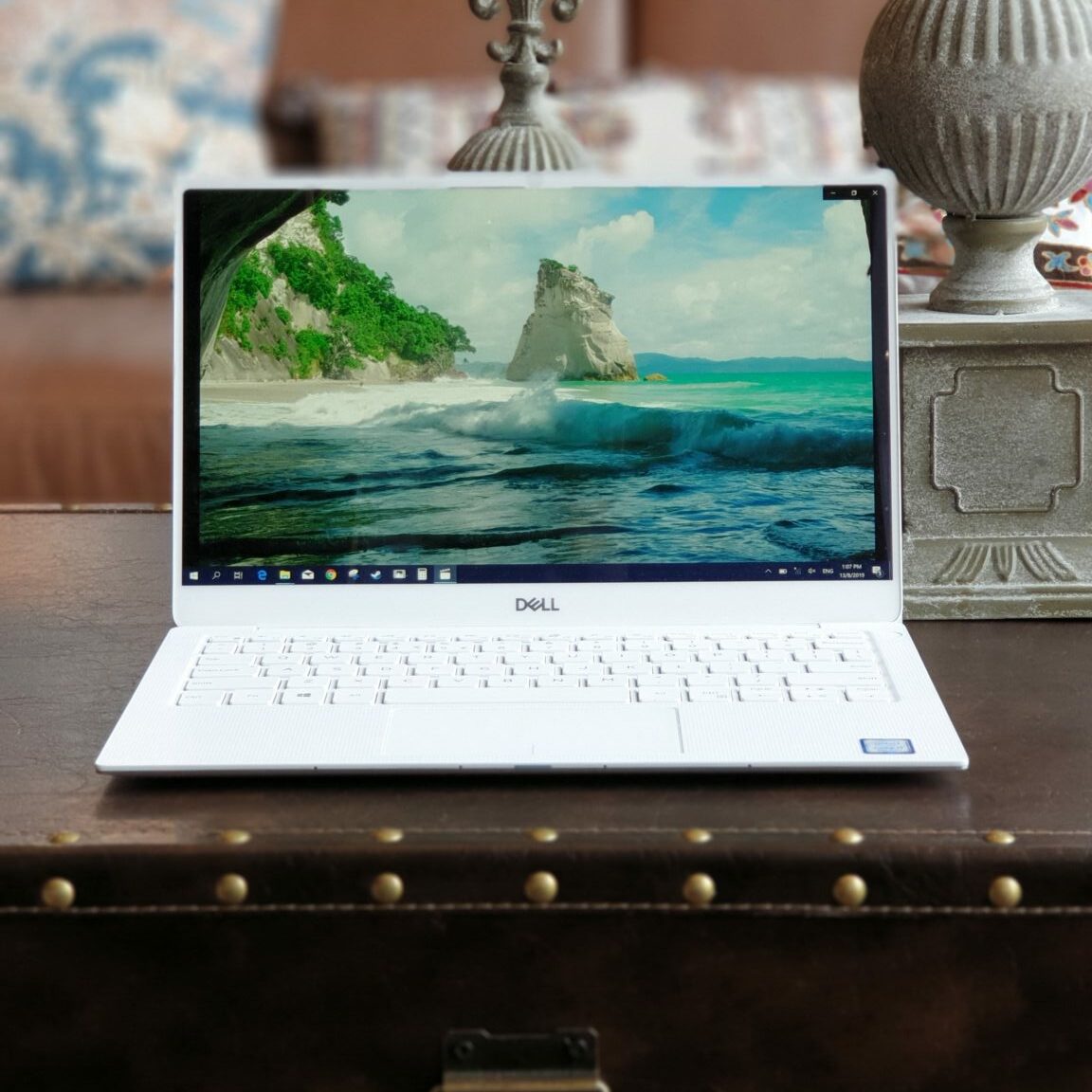
This makes the XPS 13’s display ideal for enjoying movies and for content creators like photographers and desktop publishing artists who require colour accuracy. The bezels framing it are among the slimmest seen on a notebook though the bottom bezel is by necessity slightly thicker . However, it does not detract from the fact that they’ve managed to cram in a 13-inch display in an 11-inch form factor.
Paired with this is an 8th Generation Intel Core i7-8565U 1.8GHz processor capable of running at a Turbo Clocked speed of 4.6GHz. The eighth gen Intel processors are built on a 14nm process and have about 5-10% improvement in performance compared to the prior generation’s Kaby Lake R CPU.
To allow it to achieve its full potential, the XPS 13 also has a pair of thermal cooling fans at the base of the notebook that kick in at high thermal loads though you can adjust this in the settings. This is also complemented by what Dell calls GORE Thermal insulation which consists of a thin and flexible layer of thermal conducting aerogel material within the chassis that helps to shunt additional heat away from the XPS 13’s processor.
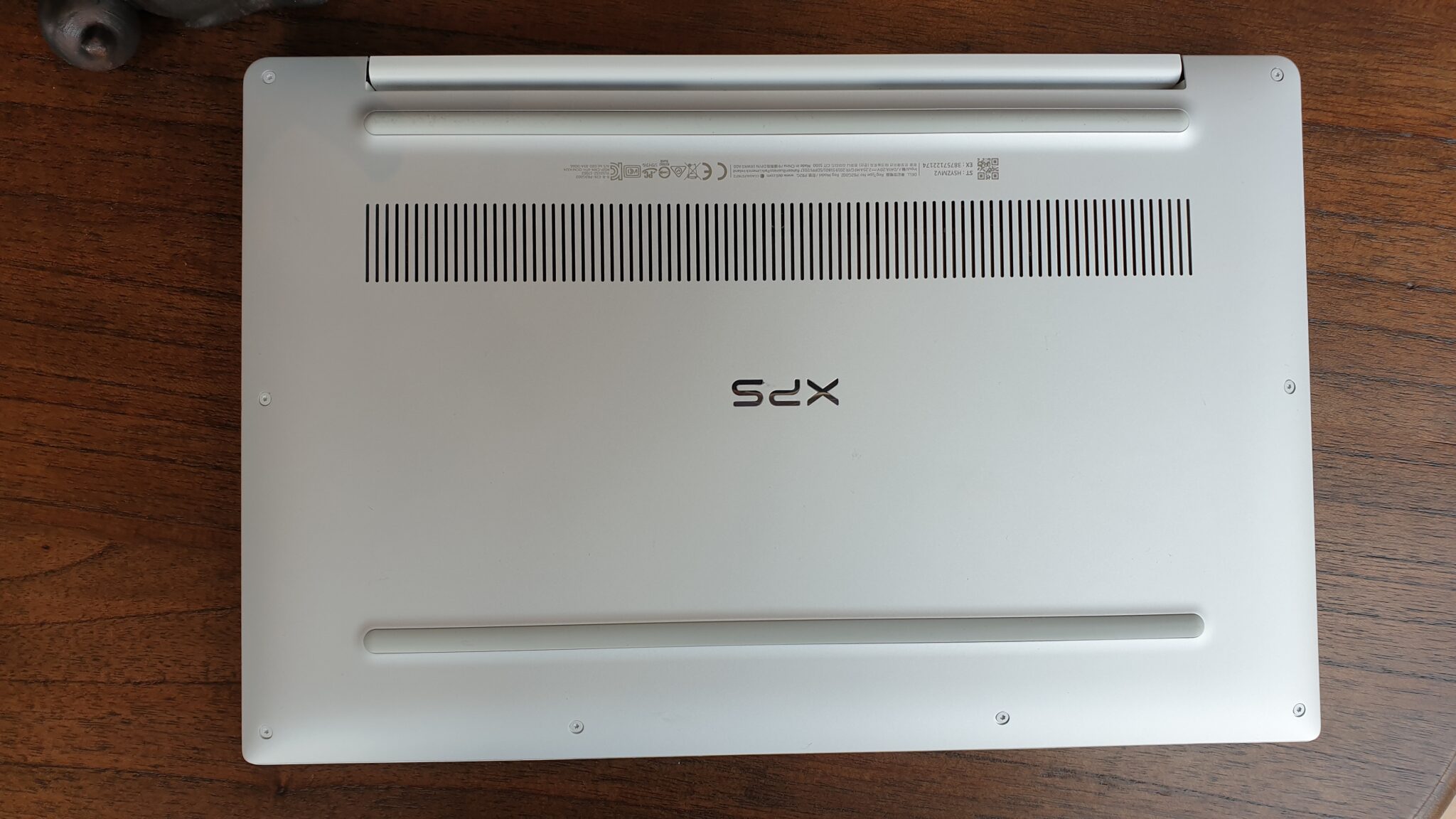
This is complemented with a maximum of 16GB of DDR4 RAM that has been soldered in. This means that you can’t augment the storage after you purchase your unit; you’ll have to specify it when you order it the first time around. Rounding things off is an 512GB NVMe PCIe solid state drive. It eschews a graphics card on account of its slimness and instead relies on an Intel HD Graphics 620 solution.
The keyboard lacks a numeric keypad but hosts a generously large touchpad and a backlit keyboard with 1.3mm key travel. In addition to backlighting, the XPS 13 adds in a power button that also doubles as a fingerprint reader to unlock the notebook. The direction pad in the lower right also doubles as a means to control screen brightness. This is further complemented by the textured white palm rests made of carbon fiber that add a rather luxurious feel to the whole affair.
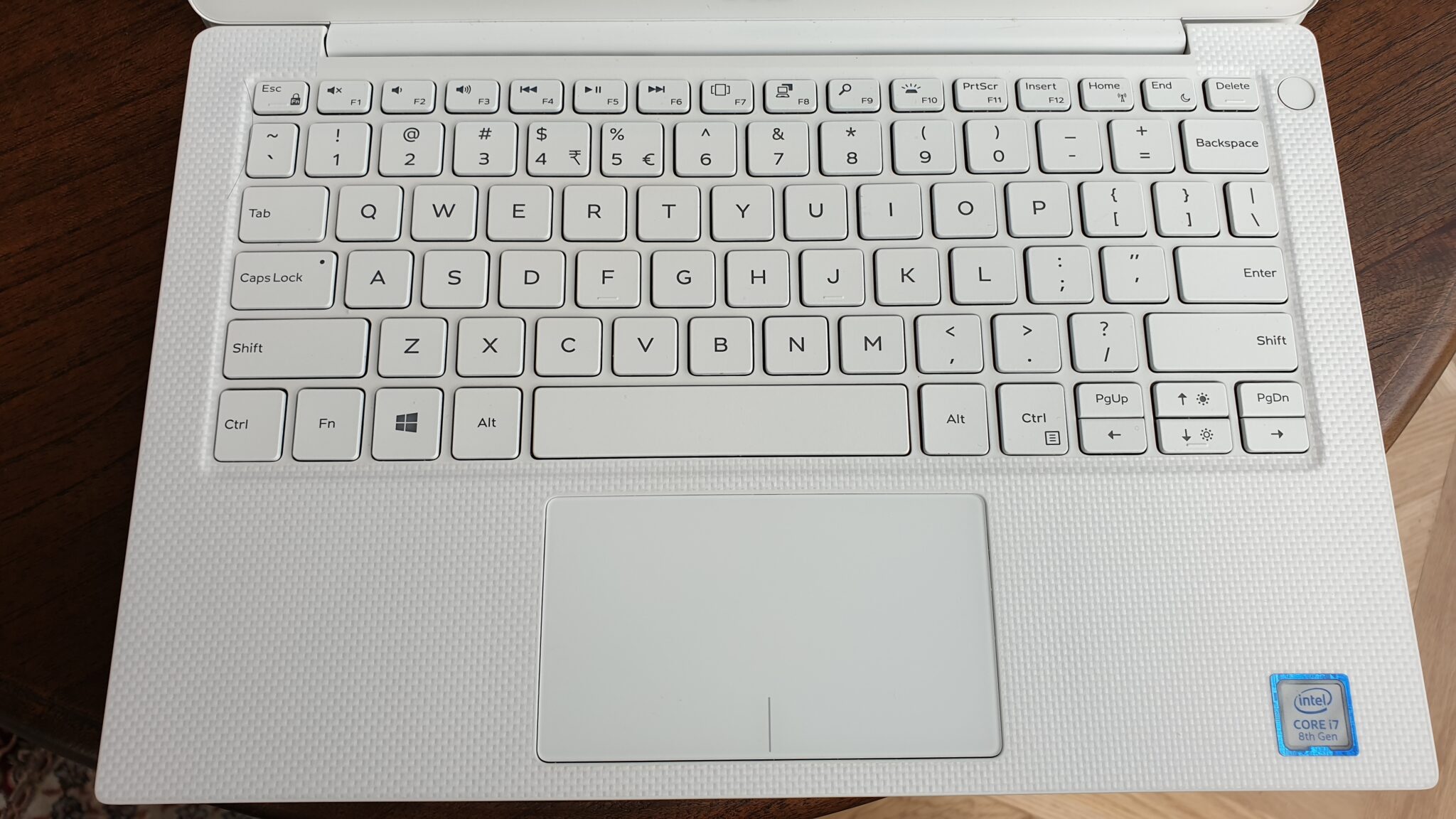
While detractors have voiced that the Arctic White carbon fiber palm rests are prone to staining, we’ve tested it over a period of a month across a variety of different scenarios, including hauling it on road trips, in offices and even with a bunch of Cheetos-stained fingers on more than one occasion and the finish remained a pristine white.
Dell Mobile Connect and other interesting bits
The XPS 13 doesn’t only excel on the aesthetics and hardware, they’ve made a genuine effort in designing a real productivity powerhouse with some useful software unique to Dell. Since most of us are connected via our phones these days, Dell has integrated their Dell Mobile Connect software that pairs up to your smartphone – regardless if it’s an iPhone or an Android phone so you can interact with your phone in a windowed instance on your Windows 10 desktop without having to take your eyes off the XPS 13’s display – for example, when taking calls, transferring files or whatnot. It doesn’t sound like much but it’s extremely helpful indeed.
Another useful addition is their Dell Update that takes the hassle of checking for updates and general housekeeping for your XPS 13 as it handles it all for you including getting updates for the firmware straight from Dell. That aside, the notebook is gratifyingly bereft of bloatware and you’re getting an otherwise clean experience when you use it.
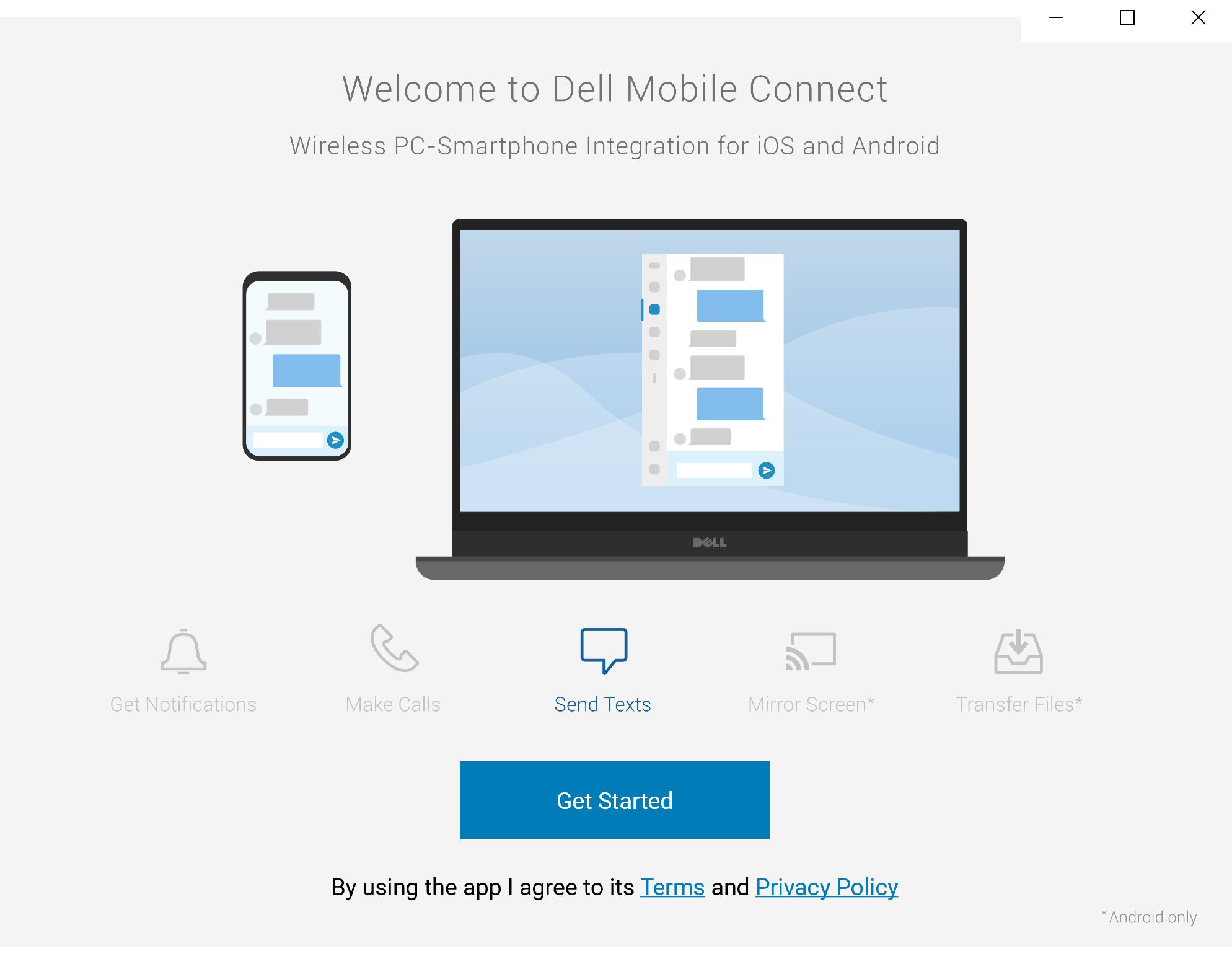
Of particular note is that Dell has a significantly more robust power and battery management software than usual installed on the XPS 13 dubbed Dell Power Management. You’re able to automatically optimise battery life, check the health of your battery and finetune your settings depending on your needs whether you need more juice or more endurance in the field. The software also allows for thermal management where you can tweak the fan speed and processor as well with settings ranging from Cool to keep things quiet at the expense of some noise on account of the louder fans all the way to Ultra Performance where the processor and fan speed are dialled to 11.

XPS 13 Performance
Booting up the XPS 13 is gratifyingly fast and it goes to the desktop in a matter of seconds. From there, the notebook handled everything asked of it in a delightfully swift fashion. On the ‘Optimised’ auto setting, we opened two dozen browser windows on Chrome and it still happily chugged along and it handled all our usual productivity tasks like Microsoft Office, spreadsheets and photo editing without breaking a sweat.
The fait accompli here is that the XPS 13 managed to continue doing so for close to a whole day when plugged into the mains without it feeling warm in the slightest and the cooling fans remained almost whisper silent. This is also on account of the GORE thermal solution which kept the heat to a level low enough that you can comfortably work with this on your lap for extended periods of time.
Alas, the XPS 13 is not a gaming machine by any measure of the word as it lacks a discrete graphics card and instead is reliant on an internal Intel UHD Graphics 620. It’s still capable of some retro gaming and less intensive games like Crying Suns or the venerable Shadowrun series which are handled without issue.
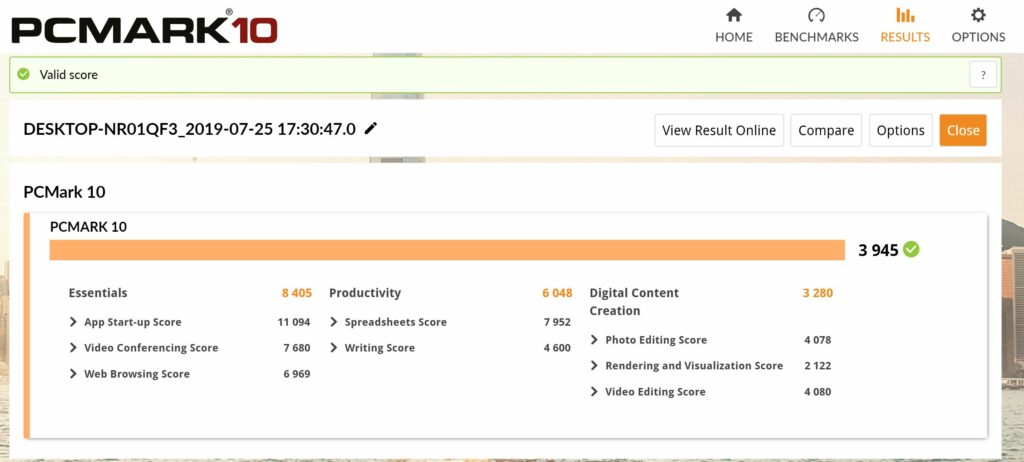

 In terms of synthetic benchmarks, the XPS 13 performed like a champ. In PCMark 10, it got a score of 3,945 while in 3DMark, Night Raid, which tests for notebooks with Intel HD graphics got a respectable score of 5,503 points. In Cinebench R20 it got a score of 1,094 points. The provision of a 512GB NVME PCIe SSD offers plenty of storage as well as nippy read and write speeds. In Crystal Disk Mark, the XPS 13 managed 2,628.2MB/s read speeds and 1,099.9MB/s write speeds which is well within the range for an NVMe SSD.
In terms of synthetic benchmarks, the XPS 13 performed like a champ. In PCMark 10, it got a score of 3,945 while in 3DMark, Night Raid, which tests for notebooks with Intel HD graphics got a respectable score of 5,503 points. In Cinebench R20 it got a score of 1,094 points. The provision of a 512GB NVME PCIe SSD offers plenty of storage as well as nippy read and write speeds. In Crystal Disk Mark, the XPS 13 managed 2,628.2MB/s read speeds and 1,099.9MB/s write speeds which is well within the range for an NVMe SSD.
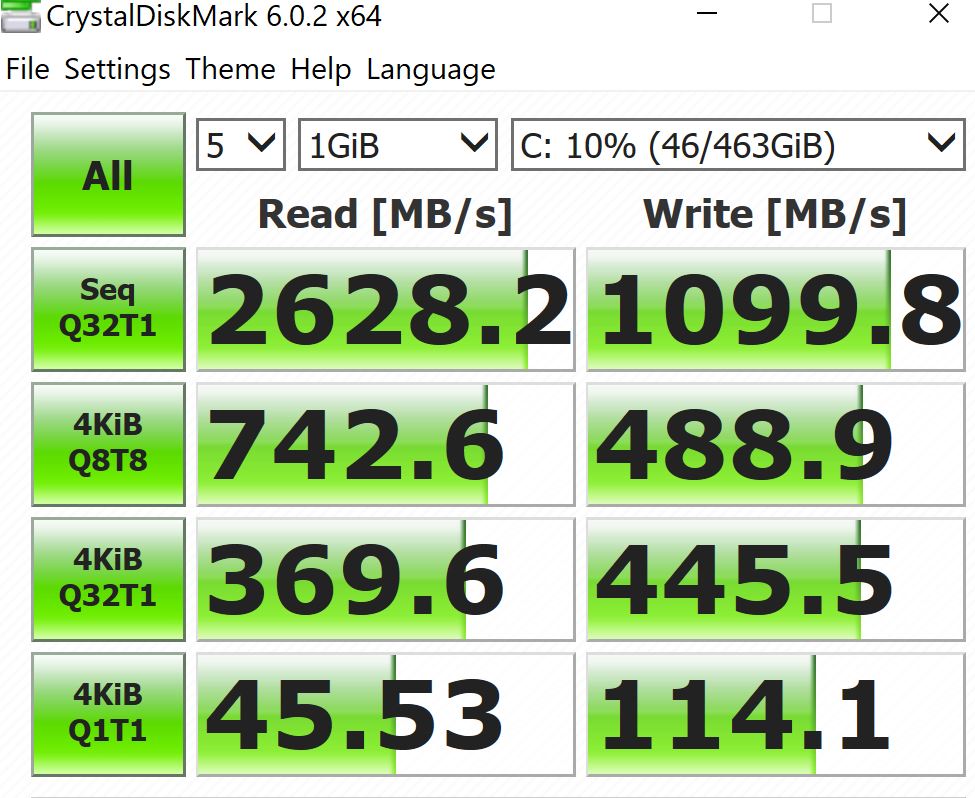
The typing experience with the XPS 13 proved to be an absolute delight on account of the wonderful tactility of the keys. We managed a good average of 120wpm and were quite easily able to touch type with the backlighting coming in handy especially when we continued working on a dimmed out bus lurching along on a red eye route down to Singapore. In fact, this very review was typed out on the XPS 13.
What really knocks things out of the park is the luscious 4K display of our review unit which offered pin-sharp text and excellent clarity along with some of the best colours we’ve seen on a panel of its size. Movies and Netflix are a real treat on the display with beautifully deep blacks and brilliantly vibrant hues when we played our test footage. Of particular note is the XPS 13’s stereo speakers that are mounted on either side of the chassis which were surprisingly competent, delivering excellent volume and a fair amount of detail too for music and movies alike.
XPS 13 Price, Battery Life and Conclusion
Our review unit’s configuration of an 8th Gen Intel Core i7 processor and a 4K touchscreen display is the highest variant of the XPS 13 9380 available but it also drains the most juice from the provided 52Whr battery. With a normal use case of web browsing, word processing and an hour or so of video playback, the XPS 13 managed to last a solid 8 or so hours on balanced settings with the screen also set to moderate brightness. You can likely eke out more from the battery if you put it into power conservation mode with dimmer brightness settings in the field. As far as ultraportables go, this kind of endurance ought to comfortably allow you to travel away from the mains for a day of work offsite. The bundled charger is also one of the lightest available so it’s not that big of a chore to tote around too.
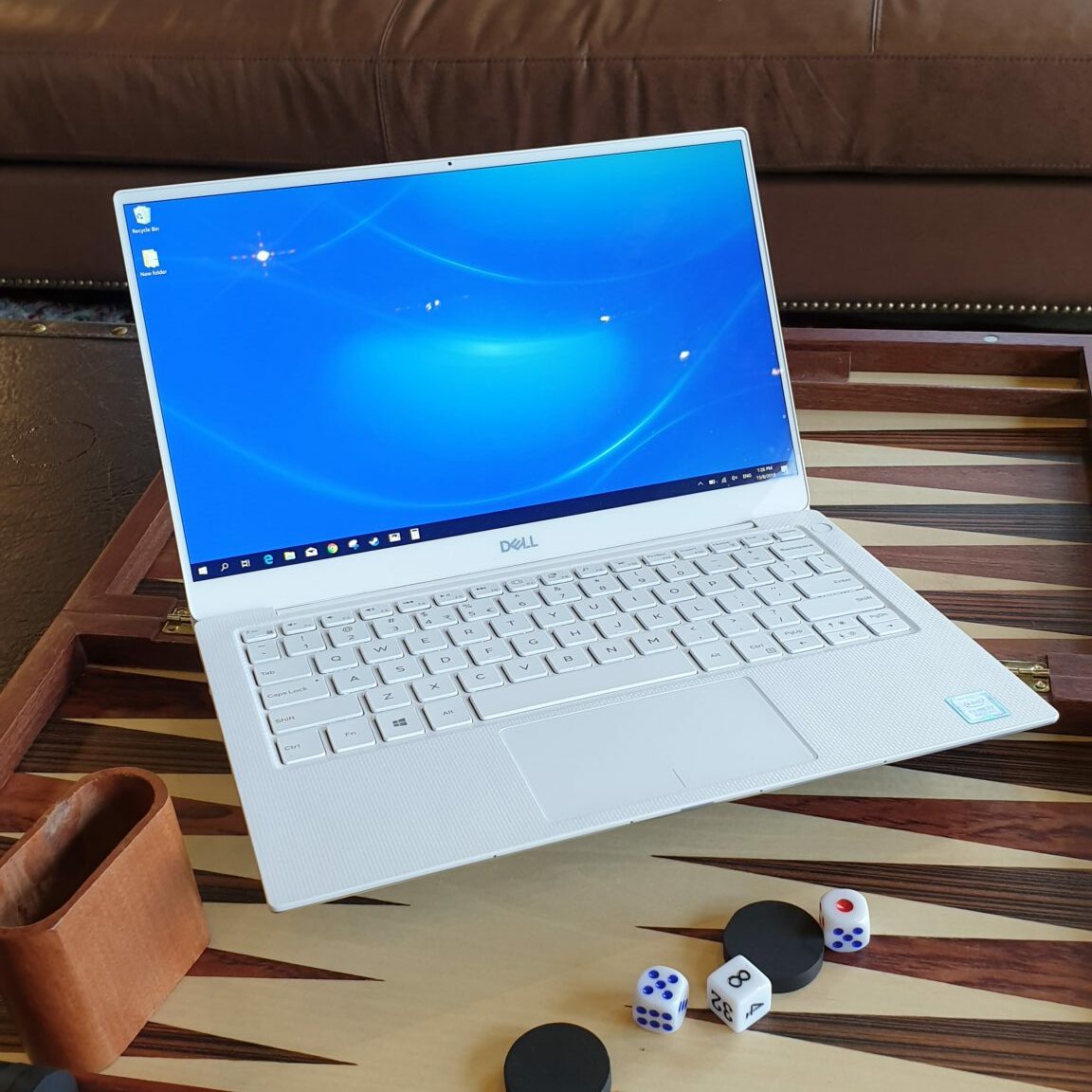
While it’s certainly an audiovisual delight that’ll make you a hit at parties and presentations, the 4K display variant has less endurance than the standard 1080P version which can be had in both touch and non-touch variants. More conservative users looking for more battery life ought to veer for the 1080P but the 4K version truly appeals for those looking for one of the best displays available in a notebook.
While there are certainly lighter or more powerful notebooks out there, our review unit of Dell XPS 13 represents a superb blend of outstanding design and excellent performance that is truly hard to top. If money is no object, this is one of the best ultraportables that money can buy.
What we liked Outstanding build quality and design, excellent keyboard, superb 4K touchscreen, improved webcam, exceptionally slim and light
What we didn’t You’ll be living the dongle life as there are no USB Type-A ports
We say The refined and refreshed Dell XPS 13 represents the pinnacle of Dell’s efforts to create the ultimate ultraportable and by all accounts, they’ve succeeded. There’s very little compromise here with the top-of-the-line model as you get one of the best 13-inch 4K touch displays that money can buy, complemented by blazing fast performance – all combined in a reassuringly sturdy, slim and beautifully hewn casing. You get what you pay for and what you get here is one of, if not the best ultrabook of the year.
Specifications
Display 13.3-inch InfinityEdge Touch Display, 3,840 x 2,160 pixels (Ultra HD)
Processor 8th Generation Intel Core i7-8565U Processor
OS Windows 10 Home
Memory 16GB DDR4 RAM/ 512GB M.2 PCIe NVMe Solid State Drive
Graphics Intel HD Graphics 620
Battery 4-cell, 52Whr
Size/Weight 302 x 199 x 11.6mm / 1.25kg
Review unit courtesy of Dell Malaysia. Get a closer look at the newest XPS 13 on their official page here.
